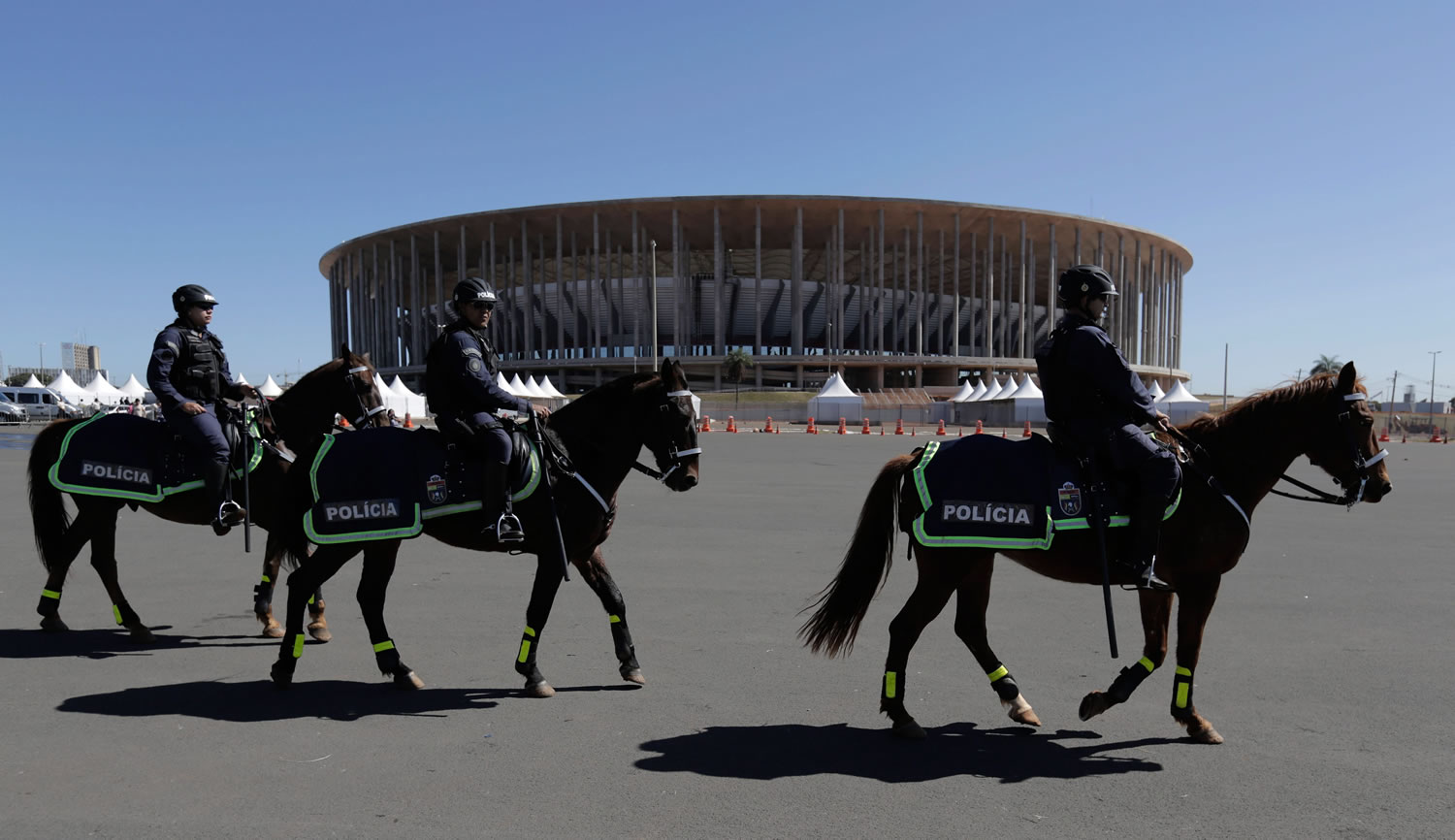RIO DE JANEIRO — This city undergoes the same transformation every four years when Brazil’s national soccer team prepares to play in a World Cup.
Murals appear on walls, banners and streamers hang from lampposts and roads bear messages urging the sport’s most successful nation to capture one more title. Yet take a look around the “Marvelous City:” With just 15 days to kickoff, there is little sign of Rio’s signature World Cup flair.
“It’s very weak this year,” said Natan Ferreira, a 44- year-old electrician, as he rigged lines of plastic Brazil flags in Praca Maracana, a five-minute walk from the 74,698-seat arena that will host the 32-team tournament’s final on July 13. “We’ve just got these flags, nothing else. It was much bigger in 2010.”
Soccer is Brazil’s passion. When the country was handed the opportunity to host the World Cup in 2007, thousands took to the streets to celebrate. Since then the mood has soured as South America’s biggest country has struggled with its preparations amid public anger at the $11 billion price tag.
Almost every one of the 12 stadiums being built or remodeled for the event has cost more than anticipated and several promised urban mobility projects have either been scrapped or delayed. During the Confederations Cup, a warm-up event held last year, more than a million people took to the streets in the biggest protests in a generation. They demanded schools and hospitals reach the same standards as stadiums being created to meet soccer governing body FIFA’s criteria.
“Tourists: Don’t get sick. We have stadiums but we don’t have hospitals,” reads graffiti across the street from the Pedro Ernesto hospital just 800 meters (2,600 feet) from from the Maracana stadium.
Written in green chalk on the busy main road in front of the hospital are the words “SOS HEALTH.” In past World Cup years, residents would use positive slogans to cheer on the team, said Vinicius Silva, a 36-year-old who just finished training at a nearby gym.
Rivaldo da Silva, a 59-year-old garbage collector, and self-declared soccer fanatic, walked past the hospital entrance with a broom tucked under one arm as he rolled a bright orange trash can.
“We should be more concerned about health care and crime than doing a World Cup for a bunch of tourists,” he said.
The mood isn’t much better in other parts of the city of 6.4 million.
In the upmarket Flamengo neighborhood, an entire street is festooned with flags of all the competing nations. Yet hanging from one window is a Brazil flag emblazoned with a popular refrain from protesters: “World Cup for who?”
Brazil’s team, which has been cheered by thousands of flag- waving fans on the record five occasions its returned home with the World Cup trophy, received abuse from striking teachers when it departed for its training camp two days ago.
Demonstrators waved banners criticizing the tournament and the team’s luxury bus was pasted with stickers calling for more money for schools.
The government’s reaction has been to publish a pamphlet showing its invested 100 times more on health and education than the 8 billion reais ($3.6 billion) it’s devoted to 12 World Cup stadiums, which former president Luiz Inacio Lula da Silva said wouldn’t cost taxpayers a cent.
The last time downtown Rio’s vendors were selling World Cup hats, flags and shirts the country was erupting in self confidence. In 2010 the economy was growing at the fastest pace in more than two decades. Since then it has slowed to the weakest three-year pace in a decade and consumer confidence has dropped to the lowest level since 2009.
Even with a World Cup on home soil, sales of World Cup related paraphernalia are well down on when the team played the last edition in South Africa. Edmar Fernandes, 55, whose store is filled with iconic yellow and green national team shirts, said business in the buildup to the World Cup are the worst since he started his stall 20 years ago.
“Sales are very weak,” he said. “It isn’t the climate for a World Cup in our country. This is no atmosphere for a party.”
In previous World Cups sales of shirts and hats started two months before the tournament. This time around he’s still waiting, and worried about excess inventory after spending 100,000 reais on stock.
Brazilians have an easier time supporting the national squad when other countries are footing the bill, said Marcelo Haddad, head of the Rio Negocios investment promotion agency.
“When the World Cup was in Africa, in the months before there were strikes, corruption allegations, the thing is that was South Africa’s problem,” Haddad said in an interview.
On the other side of the market Claudio Muniz is also concerned. His two-floor store is overflowing with World Cup memorabilia, including boxes of Chinese-made streamers, horns and wigs.
“We were expecting more than previous years given the tournament’s at home,” Fernandes said.
Preparing for the worst, Muniz said, he’s hoping things pick up when Rio hosts the 2016 Summer Olympics.
“Hopefully people will be happier by then,” he said.



